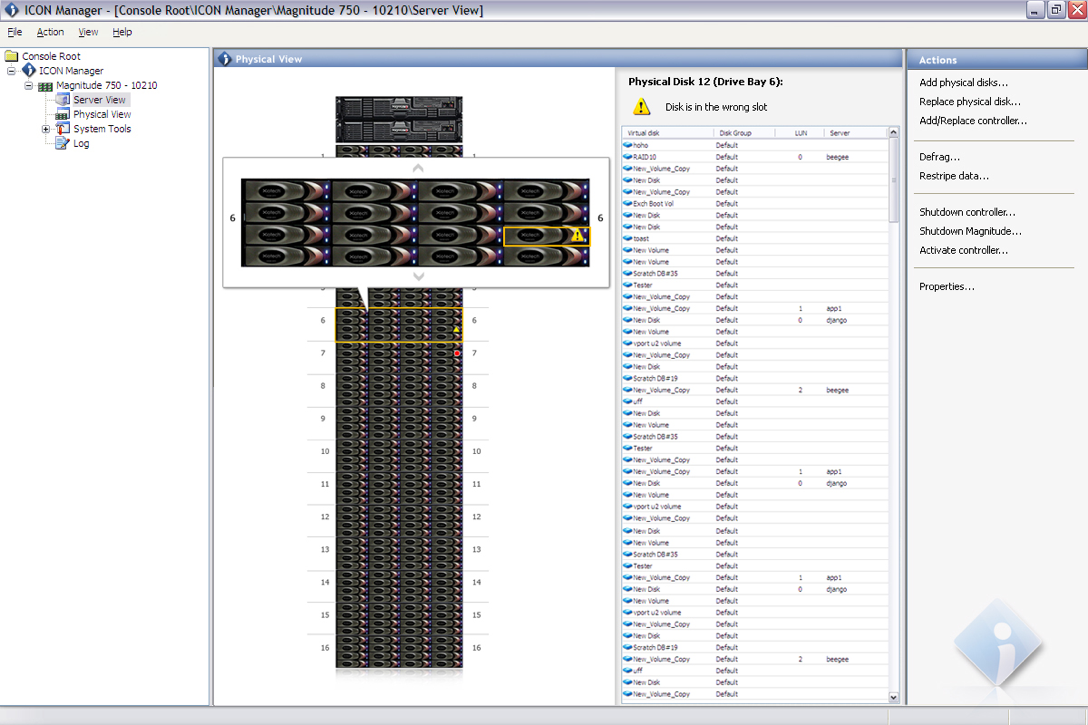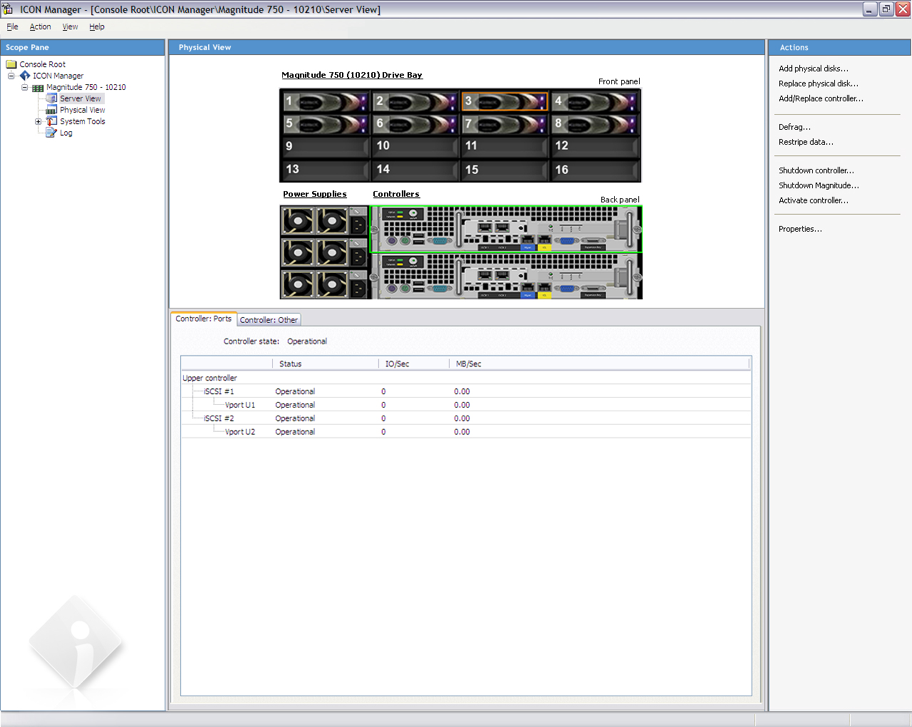Overview
This project started with a user study of the development partner community, which revealed the need to rearchitect the underlying embedded systems. We lead the architecture and design of the world's first web services based infrastructure for enterprise storage management, called ICON Services.
With ICON Services under development, we then switched gears and embarked on a comprehensive user study of the user population, culminating in the design and deployment of the award winning ICON Manager platform.
Main Success Scenario
ICON Manager is designed to impart a feeling of confidence and total control over a storage management experience that is typically dominated by time consuming, error-prone tasks.
UX/Design Highlights
We performed comprehensive user experience research, interviewing large number of customers, as well as field sales engineers.
Our goal was to tack-away from the previous product's kitchen sink approach to a slimmed-down feature set that would greatly reduce complexity, ease learnability and emphasize recall-ability for overworked storage technicians.
Deliverables included:
Heuristic review of existing products and services;
Co-developed use cases and design concepts;
Sketches and wireframes developed by team's visual designers;
Iterative reviews and user tests of a functional prototype;
Evolutionary technology roadmap to implement a step-wise replacement of a legacy management product.





Physical View
Physical-centric view of storage
User works with Customer Replaceable Units (CRUs)
ICON Manager highlights problem areas for attention
Server View
Server-centric view of storage
User works with server volumes, not physical disks on the array
Manages storage end-to-end
Zero-touch management, which means volumes provisioned to servers without opening server console
Storage View
Storage-centric view of storage
User works with Disks, not servers or volumes
User manages only from the storage array perspective
Operating system independent
Provides fine-grained control for expert storage technician






